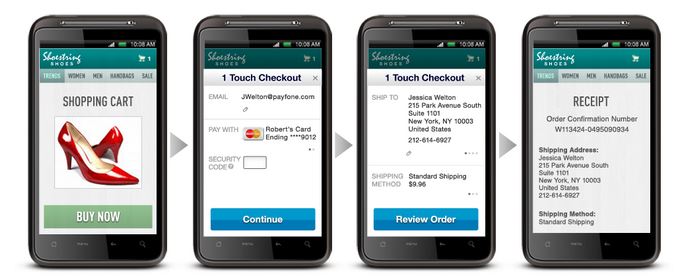http://on.wsj.com/coPzIH
US Senate Amendment Text
14 May 2010
The press seems to be focusing attention on the TBD rate setting and “swipe fees”, from my perspective the bigger long term impact to banks and networks will be elimination of restrictions associated with discounts (and steering) on competing forms of payment.
Amendment Text
“(b) Limitation on Anti-competitive Payment Card Network Restrictions.–
“(1) NO RESTRICTIONS ON OFFERING DISCOUNTS FOR USE OF A COMPETING PAYMENT CARD NETWORK.–A payment card network shall not, directly or through any agent, processor, or licensed member of the network, by contract, requirement, condition, penalty, or otherwise, inhibit the ability of any person to provide a discount or in-kind incentive for payment through the use of a card or device of another payment card network.
“(2) NO RESTRICTIONS ON OFFERING DISCOUNTS FOR USE OF A FORM OF PAYMENT.–A payment card network shall not, directly or through any agent, processor, or licensed member of the network, by contract, requirement, condition, penalty, or otherwise, inhibit the ability of any person to provide a discount or in-kind incentive for payment by the use of cash, check, debit card, or credit card.
…
In June 2003, Visa and Mastercard signed the settlement agreement which provided for steering.
D. Merchants shall also have the right to encourage or steer customers from Visa and MasterCard debit transactions to other forms of payment.
This ability to steer has been somewhat ambiguous, outside of cash. For Example, the Mastercard rules show
5.9.1 Discrimination
A Merchant must not engage in any acceptance practice that discriminates against or discourages the use of a Card in favor of any other acceptance brand.
5.9.2 Charges to Cardholders
A Merchant must not directly or indirectly require any Cardholder to pay a surcharge or any part of any Merchant discount or any contemporaneous finance charge in connection with a Transaction. A Merchant may provide a discount to its customers for cash payments.
and Visa Rules
5.2.D Discounts at Point of Sale
5.2.D.1 Advertised Price
Any purchase price advertised or otherwise disclosed by the Merchant must be the price associated with the use of a Visa Card or Visa Electron Card.
5.2.D.2 Discounts
5.2.D.2.a A Merchant may offer a discount as an inducement for a Cardholder to use a means of payment that the Merchant prefers, provided that the discount is:
• Clearly disclosed as a discount from the standard price and
• Non-discriminatory as between a Cardholder who pays with a Visa Card and a cardholder who pays with a “comparable card”
Will update this blog later, but the US Senate’s amendment will have substantial impact on merchant payment strategy. I see a strong future for new cards issued by merchants that embed strong loyalty program.. outside of the Visa/MC network (?ACH?.. PayPal…) with a substantial rewards program to drive adoption. Perhaps ACH POP will take on new life..
Card networks and issuers should get active in the merchant funded rewards space.. before the merchants own it
http://www.paymentssource.com/news/merchant-funded-rewards-spark-card-issuers-interest-2637491-1.html


